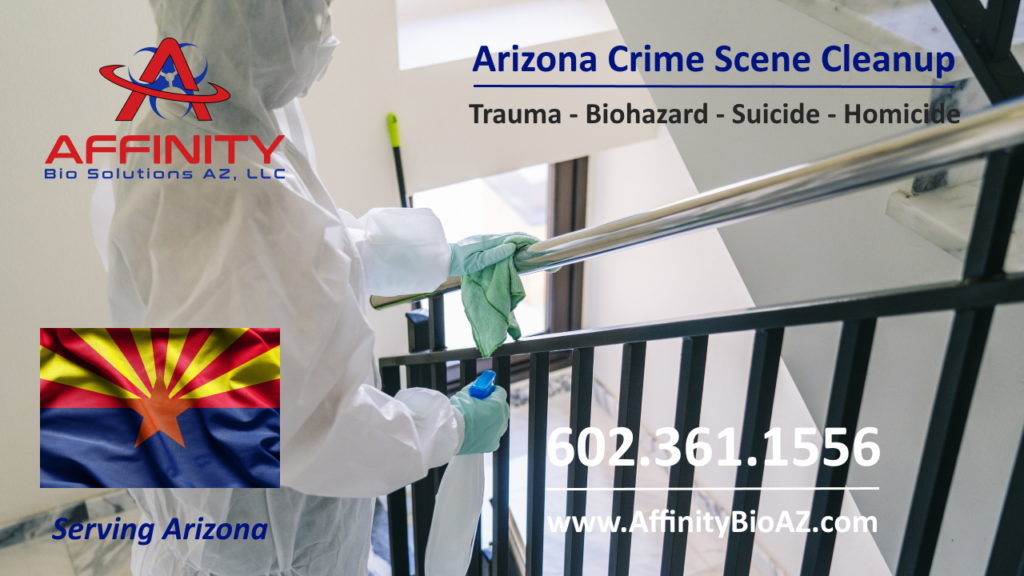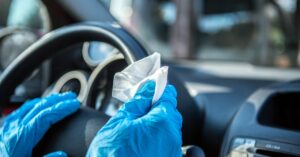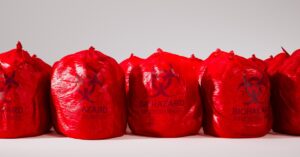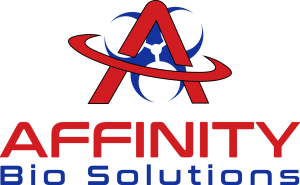What Equipment Do Odor Removal Professionals Use for Biohazard Cleanup, Crime Scene Cleanup, Odor Remediation, and Odors From Pet Damage?
The first step of the odor remediation process for crime scene cleanup, pet odor, stale tobacco smoke, and a variety of other problems is the removal of the source of the odor. Once this is completed, the odor in contents or the indoor environment must be addressed. Biohazard cleanup and odor removal professionals can use several types of equipment to accomplish this task. Some are used together and often combined with other odor removal processes to control odor in homes. Each type of odor removal equipment has its advantages and disadvantages, so let’s look at what a few of those are.



Air Filtration Devices (AFDs)
Air Filtration Devices (AFDs), are sometimes referred to as air scrubbers and come in many different shapes, sizes, and designs. They may be set up to generate negative air pressure in a home, which expels contaminated air and draws in fresh air to the environment. The contaminated air is filtered as it exits the home through ducting and a containment. Another way to use AFDs is to recirculate the air in the home or contained environment. These machines use a HEPA filter, which is capable of filtering out 99.97% of particulates greater than three microns.
Affinity Bio Solutions Az typically uses a machine capable of filtering 2000 cubic feet per minute (CFM) when setting up negative air pressure and a 1000 CFM machine with a charcoal filter to recirculate the air.
Some of the advantages of these machines is they may be used while the home is inhabited or work is being done. The efficiency of the HEPA device allows it to tackle both odors and dangerous contaminants one may expect to find in biohazard cleanup situations. Potential disadvantages are the time it takes to set up containments and ducting for negative air pressure, the cost of charcoal filters, and the possibility of disturbing neighbors with expelled air that may still contain odor. Depending on the size of the home, only using an air scrubber can take a considerable amount of time, especially with a smaller unit with a low CFM rating.

Ozone Generator
Ozone generators are often used after all other processes are completed on biohazard cleanup scenes, pet odor issues, or other odor removal situations. The machine works at removing the odor from the environment and destroying contaminants by converting oxygen (02) into ozone (03). Ozone generation can be somewhat controversial and although there are many benefits, potential dangers also exist.
Ozone generators are effective at removing odors and contaminants from pre-cleaned environments quickly (we usually leave ours for roughly 24 hours when used). The main issue with ozone is that it cannot be placed in a home where people or their pets are present because it is an inhalation hazard that can lead to serious medical complications or even death. When an ozone generator is placed on a biohazard cleanup scene the premises must be evacuated, signs need to be posted to prevent entry, and all windows/doors need to be secured. Once the machine is removed and adequate ventilation is introduced however, residents and pets may return. Another potential drawback is that some items can be damaged by ozone, particularly those comprised of rubber, but an experienced crime scene cleanup company should be able to recognize these items.

Hydroxyl Generator
Hydroxyl generation is sometimes confused with ozone generation because some of the processes are similar, such as the use of UV lights and oxidation. One of the benefits of hydroxyl generation is that unlike ozone, residents and pets can remain in the home while the unit is on because -OH is much less harmful. This also allows for the odor removal technician or trauma cleanup technician to have the unit working as work is being done. Hydroxyl radicals are also less likely to damage items they encounter and is more effective at removing odor from fabrics when compared to the ozone generator.
The hydroxyl generator is not without its setbacks though, it takes two-to-three times as long to permanently remove odors and airborne contaminants as ozone. Until recently, Affinity Bio Solutions AZ has not utilized hydroxyl generation often. This is because many of these generators also require humidity to be within a certain range to work effectively, but there are now a few units available that work effectively at lower relative humidity.
Ultra-Low Volume Fogger
An ultra-low volume fogger (ULV) can be used to apply a cold fog (sometimes considered wet fog) containing odor counteractant or disinfectant solutions to a home. A ULV may be used in biohazard cleanup or pet damage situations to apply a disinfectant or odor counteractant quickly to a large area. As ULV foggers can reduce droplet sizes anywhere from 5-50 microns, a rapid and effective spread can be achieved much more quickly than using a pump sprayer or handheld sprayer.
Some of the drawbacks to the ULV fogger is that with a wet fog it may be necessary to cover delicate items, and the droplet size may still be too large to permeate items like drywall or cabinetry. It is however, a more affordable method than using a thermal fogger, and it is very effective in applying a multitude of water-based solutions quickly.
Thermal Fogger
The large Thermogen VF thermal fogger that Affinity Bio Solutions uses after unattended death cleanups and other forms of odor removal and remediation is a very effective unit.
It is capable of fogging a completely dry fog at a rate of one million cubic feet per hour and reduces the particle size of the solution to 0.25 to 50 microns. This allows the fog to penetrate a variety of different materials to eliminate odor. This piece of equipment can fog water-based solution but is typically more effective with solvent based solutions.
Some of the potential drawbacks to thermal fogging machines is that a larger sized unit like the one owned by Affinity Bio Solutions is quite expensive and the fogging solution can also be quite costly. Solvent based solutions are more effective than water-based solutions, but care is needed to avoid contact with any open flames, such as pilot lights, which should be turned off before the fog is applied.
Connect With a Professional Who Has the Correct Equipment
We have discussed some of the equipment used by Affinity Bio Solutions AZ and other professional crime scene cleanup companies or odor removal companies. Different odor removal or biohazard cleanup situations will affect decisions about which equipment is used and the chemical or cleaning processes they are combined with. Some of these processes are outlined in other blogs.
More Blog Article Posts fromAffinity Bio Solution of Arizona

Cleaning Up Vomit, Blood, and Fluids in Cars
Eliminate in-car stains and odors effectively by learning how to safely clean vomit, blood, and other bodily fluids from your car with a step-by-step guide.

Decontaminating a Blood Spill: Step-by-Step
Break down the essential steps to safely clean and decontaminate a blood spill, including protection, disposal, and when to call a professional.

What Is Biohazard Cleanup and Why Does It Matter?
Learn what biohazard cleanup is, the risks involved, and why professional services are essential for ensuring safety and proper decontamination.

How Experts Handle Biohazard Cleanup Safely
Understand how certified professionals safely handle biohazard cleanup projects through proper PPE, regulatory compliance, and specialized training.

Blood Cleanup: Why Professional Help Is a Must
Discover the critical reasons why professional blood cleanup is essential for safety, from avoiding health risks to handling legal issues and emotional trauma.

Cleaning and Sanitizing Hoarder Homes Safely
Learn essential safety steps for cleaning hoarder homes. From protective gear to knowing when to call professionals, find reliable strategies.
